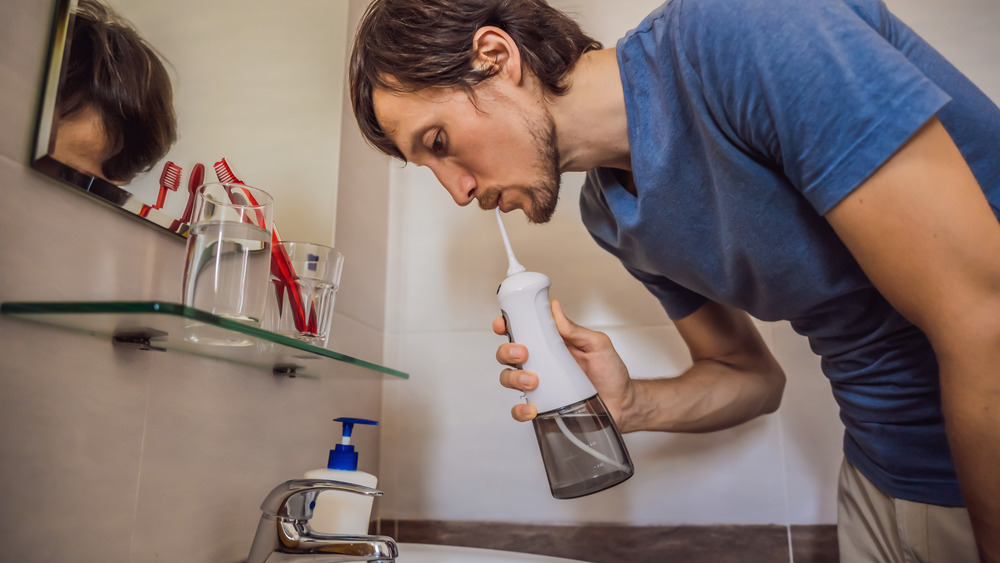Read This Before Switching To A Waterpik
If you have trouble flossing your teeth, you might be curious about a Waterpik, a brand of water flossers that — like traditional dental floss — clean between and around your teeth (via the American Dental Association). These devices, also known as oral irrigators, spray a concentrated, steady stream of water in controlled pulses to remove food stuck from between teeth.
Water flossers have received the ADA seal of approval and have been shown to be safe and effective at removing plaque, the sticky film that forms around your teeth that can lead to cavities and gum disease. Water flossers are also an effective way to reduce gingivitis, an early form of gum disease which can lead to symptoms of bad breath, receding and tender gums, and gums that bleed easily. Oral irrigators are not meant to take the place of brushing your teeth, but rather a complement to brushing twice a day, as they can get in between teeth and reach the areas your toothbrush cannot (via WebMD). You can use a Waterpik before or after brushing.
Who should use a water flosser?
A Waterpik may be a good option for anyone who has trouble flossing. Individuals who have had dental work that can make traditional flossing difficult, such as braces or bridges, may benefit from using a water flosser. Some people with arthritis in their hands may also find that water flossers are easier to handle than traditional dental floss.
While water flossers are considered an effective way to clean between the teeth, you may not want to throw away traditional floss just yet. Some research suggests water flossers don't do as good a job removing plaque as traditional floss. What's more, most dentists still consider traditional floss to be the best way to clean those hard-to-reach spaces between your teeth, as it lets you scrape up and down to remove bits of food and plaque. Be sure to talk to your dentist before switching to a Waterpik or adding it to your oral hygiene routine.


